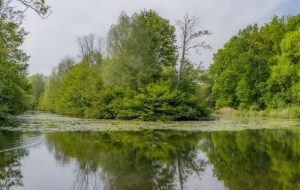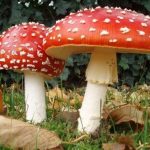 Mysteries
Mysteries  Mysteries
Mysteries  Creepy
Creepy 10 Scary Tales from the Middle Ages That’ll Keep You up at Night
 Humans
Humans 10 One-of-a-kind People the World Said Goodbye to in July 2024
 Movies and TV
Movies and TV 10 Holiday Movies Released at Odd Times of the Year
 Politics
Politics 10 Countries Where Religion and Politics Are Inseparable
 Weird Stuff
Weird Stuff 10 Freaky Times When Famous Body Parts Were Stolen
 Miscellaneous
Miscellaneous 10 Interesting Things Manufacturers Stopped Making and Why
 Gaming
Gaming 10 Funny Tutorials in Games
 History
History 10 Fascinating Little-Known Events in Mexican History
 Facts
Facts 10 Things You May Not Know about the Statue of Liberty
 Mysteries
Mysteries 10 Devastating Missing Child Cases That Remain Unsolved
 Creepy
Creepy 10 Scary Tales from the Middle Ages That’ll Keep You up at Night
 Humans
Humans 10 One-of-a-kind People the World Said Goodbye to in July 2024
Who's Behind Listverse?

Jamie Frater
Head Editor
Jamie founded Listverse due to an insatiable desire to share fascinating, obscure, and bizarre facts. He has been a guest speaker on numerous national radio and television stations and is a five time published author.
More About Us Movies and TV
Movies and TV 10 Holiday Movies Released at Odd Times of the Year
 Politics
Politics 10 Countries Where Religion and Politics Are Inseparable
 Weird Stuff
Weird Stuff 10 Freaky Times When Famous Body Parts Were Stolen
 Miscellaneous
Miscellaneous 10 Interesting Things Manufacturers Stopped Making and Why
 Gaming
Gaming 10 Funny Tutorials in Games
 History
History 10 Fascinating Little-Known Events in Mexican History
 Facts
Facts 10 Things You May Not Know about the Statue of Liberty
10 Times Ponds Were Surprisingly Strange
Ponds are beautiful at times, but nothing to write home about. But some pools are downright peculiar. From ghost ponds to an Australian golf course teeming with sharks, here are ten puddles that refuse to be normal.
Related: 10 Reasons to Stay Away from Large Bodies of Water
10 Ghost Ponds with Zombie Plants
Ghost ponds are not undead pools that haunt the night. Instead, the term refers to ponds that are buried, usually under agricultural land. They were never fully drained, and while most of the water might be gone, the original vegetation remains.
A team from University College Londen estimated that roughly 600,000 ponds are hidden beneath the English countryside. By 2017, they dug up three ponds and revived the seeds of eight types of aquatic plants. Incredibly, some of the seeds they found had been dormant for 150 years.
Going a step further, the researchers spent six months and successfully turned a ghost pond back into a real pond, thriving with many plant species. The study not only proved that lost ponds can be restored, but they also offer the tantalizing opportunity to discover rare or extinct plants—and, in true zombie fashion—bring them back to life.[1]
9 A Turtle Piggy Bank
A green sea turtle called Omsin had a pretty awesome life. For years, she paddled about in a pond in Thailand, a habitat that was made of dreams. Literally. People would visit the pond and toss coins in the water to make a wish. This tradition probably prompted the turtle’s keepers to name her “Omsin,” which means “piggy bank” in Thai.
The whole thing was adorable. But unbeknownst to everyone, it was a disaster growing bigger by the day because, true to her name, Omsin started to eat the coins. By the time veterinarians noticed that something was wrong, her situation was dire. The turtle had swallowed so many coins that their collective weight hampered her swimming and cracked her shell.
The endangered animal was wheeled into emergency surgery. During the operation, the extent of her dangerous habit was discovered—Omsin had consumed over 900 coins. Luckily, veterinarians were able to remove the small fortune from her stomach. Unfortunately, Omsin died after a second surgery to repair damaged intenstines.[2]
8 Alien Polka Dots
In 2013, during early spring, cold weather triggered a snowstorm in the small town of Eden, New York. Several ponds in the area froze over. One morning, a resident noticed that one of these ponds looked odd. It almost appeared that someone had taken a giant cookie cutter and removed round shapes from the white surface.
None of the locals could recall seeing something like this before, and weird explanations soon started to crop up on social media. The best (entertainment-wise) suggested that aliens, fish flatulence, or roaming elephants caused the polka dot pattern.
The real cause is likely a natural phenomenon. Some frozen ponds receive water from warm springs. When the warmer water rises to the surface, it could melt the ice on the pond’s surface in certain places. Another plausible theory suggests that rotting plants on the bottom of the pond produced gases that rose to the surface and caused the dotty pattern.[3]
7 Custom Frog Ponds
Not every pond is created by geological forces or humans. The world’s biggest frog also loves to excavate a swimming pool for the whole family. The body of a Goliath frog can measure 13.38 inches (34 cm) and weigh 7.27 pounds (3.3 kg). In recent years, researchers documented for the first time how these frogs move rocks almost as heavy as themselves to build ponds for their young.
The small ponds, which are the first example of nest-building in any amphibian from Africa, are dug next to fast-flowing rivers. The pools provide the frog eggs (sometimes numbering 3000) and tadpoles with a safe haven against predators and torrential waters.
Goliath frogs are doting parents in another way, too; they will guard the nest throughout the night. It’s not clear which parent does what, but if local hunters are to be believed, the male builds the pond, and the female guards the nursery. Regardless, scientists believe that the heavy labor involved in their reproduction cycle could finally explain why these frogs have evolved to such an extraordinary size.[4]
6 Alligator Popsicles
In 2018, George Howard was the manager at Swamp Park in North Carolina, an area that included an alligator preserve. One cold morning, he visited a frozen pool with at least 18 alligators when something odd caught his eye. Sticking through the ice were several dark stumps.
Howard first mistook the stumps for trees, but then the horror of realization sank in. The dark humps had teeth. He was looking at alligator snouts. Believing that all of his gators had died during the night, frozen solid, the park manager turned to Google to find out what had happened.
As it turns out, none died. His research revealed that the alligators were using a bizarre survival strategy. Once they anticipate freezing weather, the reptiles hold their nostrils above water, purposefully allowing their jaws to be frozen in place. They might not be able to move, but at least they can breathe until the ice melts again.
The alternative is fatal. Some alligators have been documented trying this strategy too late when their pond was already frozen over. Not being able to break through the ice, they drowned.[5]
5 A Coffin with Remains
In 2019, a construction company was tasked with renovating a pond. They arrived on the golf course, where the pond was located in Tetney, England, and set to work. They never expected to pull a coffin from the mud, but that’s what happened. This wasn’t a case where a funeral home had sneakily dumped a casket on the golf course. Instead, the golf course was built on an ancient site, and the pond happened to contain a rare, 4,000-year-old burial.
The coffin was huge and heavy. Crafted from a hollowed-out oak tree trunk, the interior contained human remains, an incredibly well-preserved axe, and a bed of plants. It’s hard to garner information about someone who died so long ago, but the burial offered a few clues.
The individual was buried beneath a gravel mound, a funerary practice reserved for the important members of Bronze Age society. The axe also suggested that the deceased was part of the elite. The bed of plants, which consisted of moss, hazelnuts, juniper, and leaf buds, put their time of death sometime in late spring.[6]
4 The Brain Blob
A few years ago, British Columbia, Canada’s Stanley Park hosted a BioBlitz. This is a fun event where scientists and amateur nature lovers get 24 hours to walk around the park and catalog as many species as they can. While blitzing around a pond, someone discovered something strange in the water.
It resembled a brain. Or, as some have described it, a “giant peeled lychee fruit.” The blobby thing was also dishwater-brown and jiggly. Luckily for everyone involved, it wasn’t a real brain but a rarely-seen animal colony. Called a bryozoan, it starts out as a single invertebrate creature that multiplies by itself, ultimately forming a community of thousands of organisms held together by a gummy protein.
After this discovery, more “brain blobs” were discovered in the pond over time. This was unusual in itself as they are hard to find and have never been discovered outside the warm eastern region of the Mississippi River. However, since the pond is packed with algae and plankton (favorite snacks of the blobs) and the park is warming due to global warming, researchers are not too surprised.[7]
3 A Forest

One might be forgiven for thinking that a forest cannot fit in a pond, let alone hide in such a way that nobody notices. But that is exactly what happened in 2007 in Arnheim, Michigan. The Michigan Department of Transportation (MDOT) needed fill for a highway construction project, and to get the material, they decided to dredge a pond on a nearby farm.
The diggers were at 15 feet (4.5 m) when they encountered the first tree. Before long, they were pulling out more trees than mud. Experts who visited the site had never seen so many millennia-old trees together, noting that clumps of tangled trees, numbering up to a dozen at a time, were being raised to the surface. Some logs were 20 feet (6 m) long and 2 feet (60 cm) thick.
The unusual sight begged the question. What buried this forest so deeply? Whatever happened, it was a single and violent catastrophe. The main suspect is the last glacier that moved across the region 10,000 years ago. It had either gathered the trees somewhere else and carried them to modern-day Arnheim or mowed down an entire local woodland.[8]
2 A Pool with Syrup-Like Water
As different as ponds can be, their water consistency is about the same as water from a tap. But one pool is doing its own thing. In 1961, a scientific expedition to Antarctica found a shallow pond topped with water so salty it ran more like thin syrup than H20.
The Don Juan Pond, as it came to be known, is a mystery. Scientists do know some amazing facts, like the pond’s ability to stay liquid at -58°F (-50°C) is because nearly half of its weight is pure salt. However, other questions remain. No one can agree on the source of the pond. It is also unknown where the salt comes from or why the pond is so chemically pure.[9]
1 The Golf Course Sharks
During the 1990s, it wasn’t a good idea to fish for your lost golf ball in the ponds of Carbrook Golf Club. Located southeast of Brisbane, Australia, the trimmed landscape didn’t include graceful koi fish in the ponds. Nope. One water feature had sharks.
No one knows how they ended up there. But the bull sharks, known for their ability to leave the salty ocean and thrive in freshwater rivers, likely washed onto the course during heavy floods that broke the banks of nearby rivers and inundated the golf course.
The man-made pond measured 2,300 feet (700 meters) long and had a depth of 1,250 feet (380 m). For 20 years, the sharks called the golf course home and reached sizes of up to 9.8 feet (3 meters) long. They even became the club’s mascots.
Then they disappeared. Another flood in 2013 might have allowed some to escape back into the rivers, but since the last sharks were seen in 2015, it’s possible that the remaining few simply died and sank to the bottom.[10]








